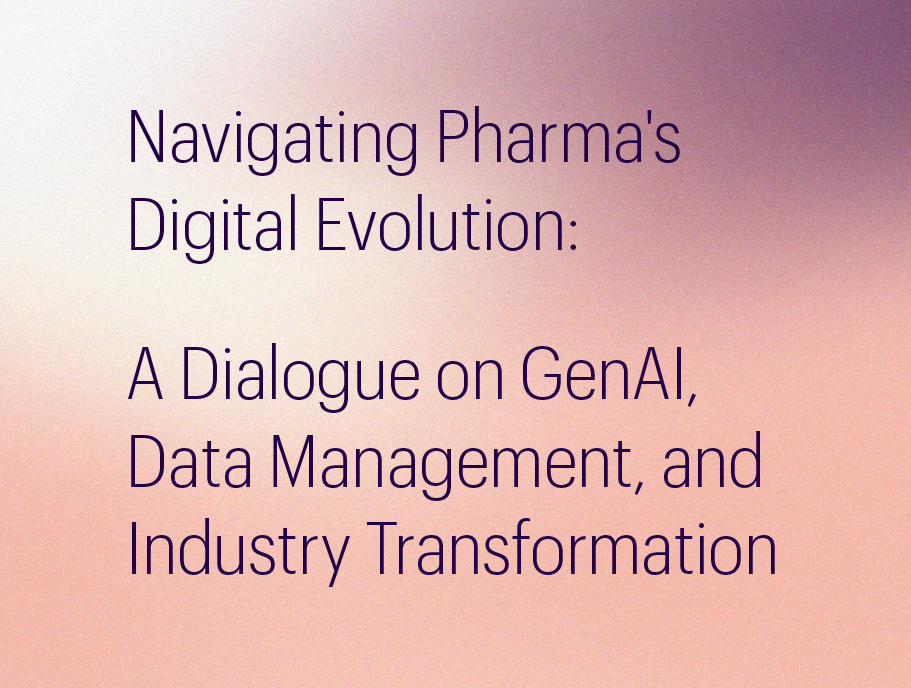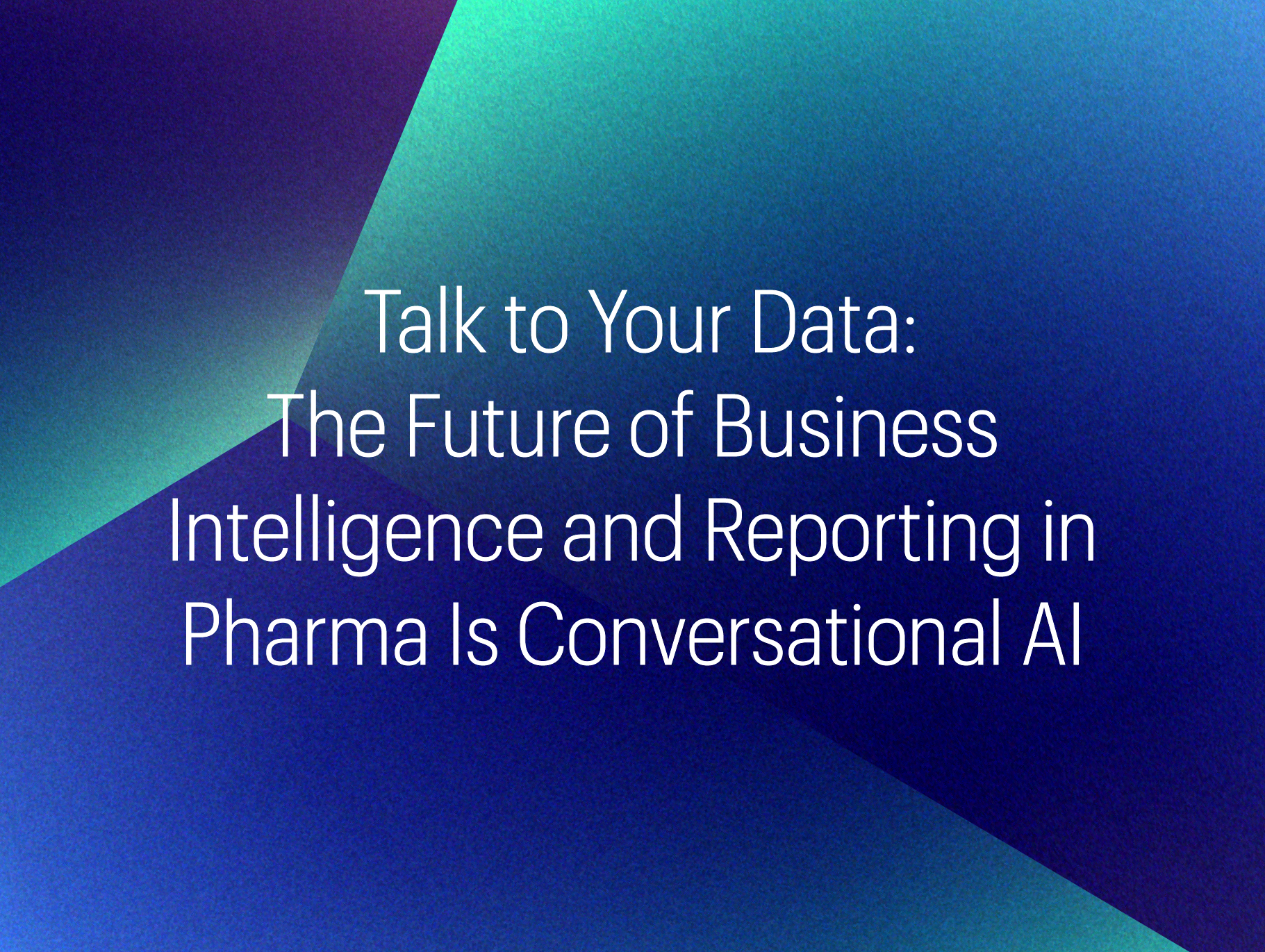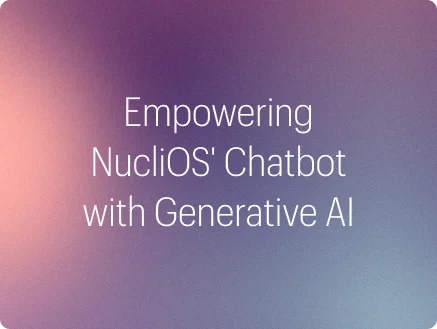For years, pharma companies have invested millions in building robust BI ecosystems — dashboards, data warehouses, KPI scorecards, and drill-down reports. And yet, the most frequent feedback from field reps, brand teams, and commercial decision-makers still sounds like this: “I can’t find the insight I need — not when I need it, and not in the format I understand.” This isn’t a problem of data volume. It’s a problem of accessibility and interface.
Business Intelligence and Reporting in Pharma hasn’t been lacking in sophistication — it’s been lacking in fluidity.
Today, a quiet but radical shift is taking place. One that doesn’t involve reinventing your entire data stack. The real disruption is this: what if you could just talk to your data?
The Dashboard Dilemma
Dashboards have become the default output for most analytics initiatives in pharma. But here’s the catch: dashboards were never designed for the end-user. They were built for analysts — people trained to interpret data, apply filters, and navigate layers of visual complexity.
But pharma decision-makers — be it a sales rep prepping for an HCP call, or a brand director reviewing campaign impact — aren’t analysts. They’re experts in business, medicine, and customer behavior. And most of them don’t have the time or technical knowledge to sift through charts to find an answer.
So, what happens? They email the analytics team. They wait for custom reports. Or worse, they make critical decisions without data.
Enter Conversational AI: The Interface Pharma Didn’t Know It Needed
We recently worked with a leading pharma organization that was facing these very challenges. Their internal BI tools, built using well-known platforms, had grown increasingly complex. Users struggled with rigid filters and couldn’t express questions in plain language. The natural language tool they were using didn’t support follow-up questions or conversational memory. There was no “nudge” when queries were unclear. The result: low adoption, poor insight discovery, and slow decisions.
Our approach wasn’t to rebuild dashboards — it was to replace them as the primary interface.
We built a conversational AI layer powered by GenAI and LLMs like GPT-4, designed specifically for business intelligence in pharma. The goal was clear: let users interact with their data as naturally as they would with a colleague.
Ask a question. Get an answer. Ask a follow-up. Dig deeper. All through conversation.
From Chatbot to Conversational Intelligence: What Made It Different
This wasn’t just a chatbot with pre-defined replies. It was a true conversational intelligence system, capable of:
- Understanding context: If a user asked, “show me engagement drop last month,” the system knew whether “engagement” referred to rep visits, email open rates, or HCP responses — depending on the user’s prior queries and domain.
- Generating SQL on the fly: Using the business context and metadata, the GenAI engine translated questions into precise queries across multiple datasets.
- Handling complexity: From “Which territories saw a drop in TRx for Pluvicto in Q2?” to “Show top five reasons for discontinuation in patients under 65,” the model handled everything from Level 1 to Level 3 question complexity.
- Providing nudges and follow-ups: If a user submitted a vague query, the system offered guided clarifications. Follow-up questions were handled as part of a continuous dialogue.
- Cross-dataset querying: Users could ask questions that spanned multiple domains — like trial data and commercial metrics — and receive cohesive answers.
This allowed the organization to move away from static reporting to conversational discovery — where insights emerge naturally through exploration, not extraction.
It’s Also a Cultural Shift
Rolling out conversational BI isn’t just a UX upgrade. It changes the role of data in the organization.
Instead of viewing data as something analysts own and distribute, business teams begin to explore insights independently. They become curious. They ask better questions. And more importantly, they get immediate answers.
In the project we led, the pharma team went from needing support for every new dataset onboarded to being able to do it themselves — thanks to modular architecture, reusable components, and self-serve documentation. The dependency on external support dropped by over 85%. That’s not just scale. That’s enablement.
Read the full case study here.
What Now — And What’s Next
If you’re a leader responsible for data strategy, analytics, or commercial operations in pharma, ask yourself:
- Are your teams still waiting for dashboards to refresh before they can act?
- Are your insights locked behind BI tools that only a fraction of users are comfortable with?
- Are you spending more time building dashboards than answering business questions?
If the answer to any of these is yes, it might be time to reimagine what BI means in your organization.
Because the future of BI isn’t rows, columns, or charts. It’s not filters and drilldowns. It’s dialogue — intuitive, fast, and focused on business outcomes.


